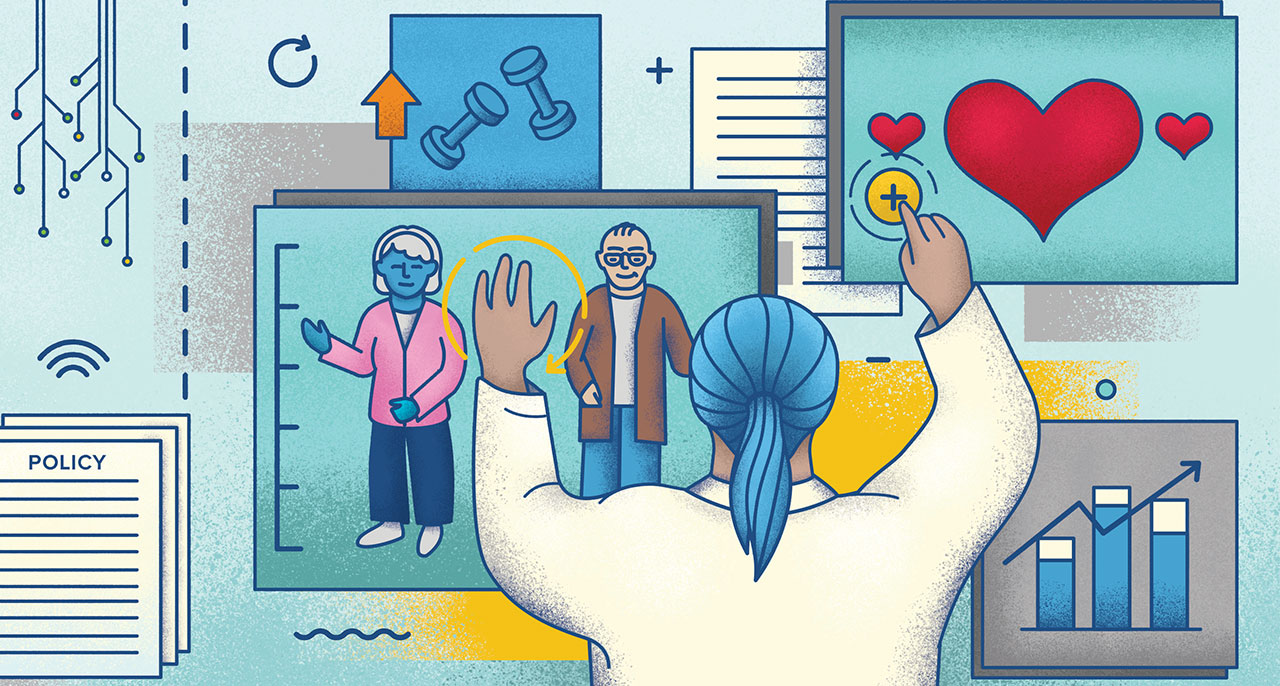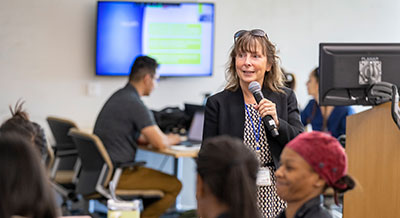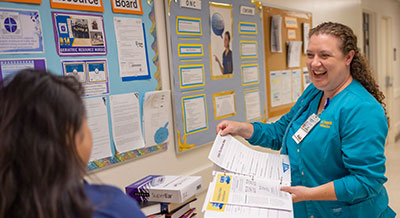Researchers at the Betty Irene Moore School of Nursing at UC Davis are partnering with the California Department of Aging (CDA) and adult day care centers in California to improve dementia care. The effort is thanks to a $5 million grant from the CDA through Gov. Gavin Newsom’s Master Plan for Aging.
The population over 65 will make up one quarter of the state’s residents by 2030. Of the nearly five million family caregivers assisting family or friends over 65, 34% care for someone with Alzheimer’s disease or dementia, usually with little support or training.
That is often where adult day services come in. Without these centers, individuals, especially those with cognitive impairment, would likely need 24-hour nursing care in a skilled nursing facility.
Linda Hoover relies on Adventist Health Lodi Memorial Adult Day Services five days a week for her husband Cliff. After three years of cognitive decline, Cliff was diagnosed with vascular dementia. He no longer calls his wife by her name.
“He’s gone from a person totally able to take care of himself to where I feel like I’m taking care of an infant. I don’t know how I’d be able to do it mentally or physically. It’s very taxing on you,” Hoover explains.
“It’s too hard for my mom,” adds Amber Batch, their daughter.
Hoover admits she rarely gets to take naps and she’s up several times each night.
“What we found is that adult day care centers are critical to people’s physical health, mental health, and family and caregiver health,” says Lydia Missaelides, the former executive director for the California Association for Adult Day Services (CAADS). “There’s an urgency in creating a robust network of day centers around the state who are skilled at providing services to this growing population and their caregivers.”
A learning community
The CDA wants to create a modernized community care model for people with Alzheimer’s disease and related disorders. CDA has partnered with seven adult day health care centers across the state that provide dementia care and researchers from the School of Nursing.
Together, they are working on the Cal-COMPASS (California Community Program for Alzheimer’s Services and Supports) Pilot. The goal is to create a learning community to develop best practices for these programs and improve resources for the many other agencies that deliver this kind of service.
“These agencies are like lone rangers. They do a lot of hard work on their own, are full of energy and love, and are underpaid and under resourced,” says Heather M. Young, associate director for strategic partnerships in the School of Nursing’s Family Caregiving Institute. “There is a feeling many others have the same commitment. This project helps them to connect, energize and build on lessons learned.”
Reviewing data, improving equity
Young and institute Director Janice F. Bell serve as evaluators to identify best practices, create uniform measures and evaluate outcomes. Each site participating in the pilot has goals that the School of Nursing team will measure. In addition, the pilot calls for enhancing services to work in new and more diverse populations, thus fostering more equitable services for underserved communities.
“There is strength in collaboration and having standards across sites on behalf of all Californians,” Bell says. “These centers want to work together on a manual, a playbook, for running a good day care center with the right components and interventions.”
‘It’s just really hard to afford care’
Cliff’s VA benefits pay for part of his care. Linda Hoover hopes to find a full-time facility in their price range.
“I know I can’t go on like this, but I’ve downsized as much as I can to make it easier to get by. It’s just really hard to afford care,” Hoover explains.
Establishing what makes programs sustainable allows these centers to continue serving the most vulnerable populations.
“Data provides a basis for advocacy for expansion of these services, funding for them, for understanding best practices,” Missaelides adds. “It puts it into a language that policy makers and funders understand. It’s critical.”






